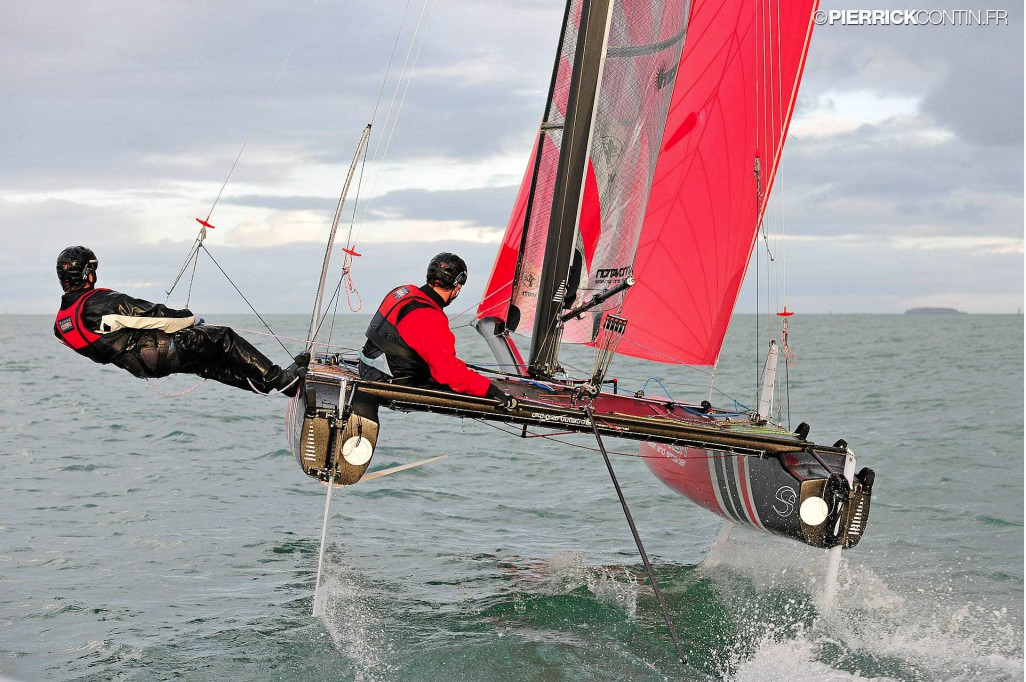“It’s like removing the handbrake – suddenly everything gets smoother and faster in pure silence.” This gravity-defying US$40k catamaran rises completely out of the water at speed on a pair of hook-shaped hydrofoils. It looks like the work of David Copperfield, but it’s real, and it’s set to start a revolution in the sailing world.
Sailing types can now buy themselves a racing catamaran that breaks free from the drag and discomfort of the water. The Flying Phantom mimics the hydrofoiling action demonstrated by the 2013 America’s Cup field by rising up on two J-shaped wings at speed until both hulls are a good two feet out of the water.
Why? “The main speed limits of a catamaran are the length of the hull, the wetted surface, and the pitch poling as you push it too hard,” explains Phantom’s Nicolas Felix. “When you’re foiling and the hulls aren’t dragging in the water, you can get nearly limitless performance. On a regular boat, you’re always fighting to gain a tenth of a knot, fighting against the friction of the water and the pitching of the waves. When you take off, the drag just disappears and there’s pure silence. Every puff of wind is transformed directly into acceleration.”
The Flying Phantom can get up on its foils in wind as low as 7 knots sailing downwind or perpendicular to the breeze, or upwind if the wind speed is above 10 knots. Its current tested max speed has been 33 knots, but Felix believes that limit can still be pushed: "The next limit is the cavitation issues you get around 45-50 knots.”
Apart from the vast reduction in drag, another benefit of hydrofoiling is that once the boat is out of the waves, the ride gets a lot smoother. Sailors who have spend years being beaten around the hindquarters by choppy waves are reporting that the foiling experience feels as much like a magic carpet ride as it looks. Of course, if something goes wrong and the boat crashes back down into the water, there could be some pretty serious deceleration in effect that might negate any comfort advantage pretty quickly, to put it mildly.

Hydrofoiling is not new in the sailing world, "flying" boats have held the outright sailing speed records for more than a decade, and the current champ “Vestas Sailrocket II” smashed out a truly scary 65.45 knots back in 2012. But the Flying Phantom is the first product to bring the levitation experience to the commercial market – a “democratizing” of the foiling catamaran.
Phantom International (based in France) is planning to race the Flying Phantom at a number of events in 2014, and also looking into the possibility of developing a racing series specifically for small foiling cats like this one.
The Flying Phantom launched at the Paris Boat Show this year and is on sale now for €28,260 (just under US$40,000).
Product page: Phantom International


































